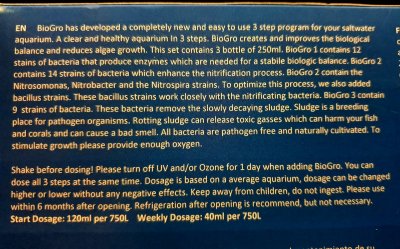- Joined
- Jun 16, 2019
- Messages
- 1,479
- Reaction score
- 1,838
By the way - it was you that asked the question below - I'm just surprised that you seem to be irritated because someone dared to answer your question? The explanation - is that lots of people have great tanks without adding bacteria - so its coincidence/luck/or something else
How about you check that attitude at the door? This thread is about what others are doing as far as bacteria dosing is concerned.
You didn’t answer my question in the slightest bit. You are clearly here to fight with anyone that feels there is a benefit.
Can someone please show me how to mute this person?

























